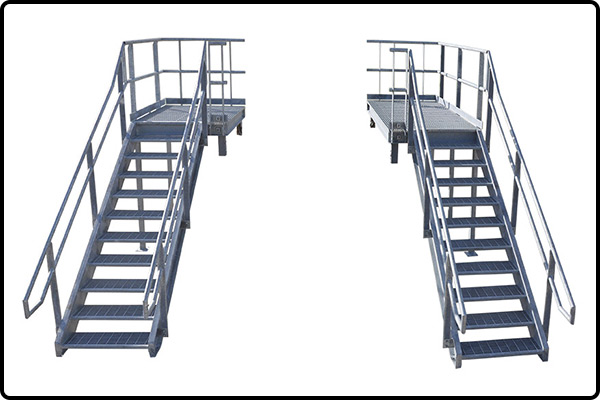
Introduction
Stair platform requirements encompass the specifications and standards necessary for designing, installing, and maintaining safe and accessible stair platforms. Understanding these requirements is crucial for architects, builders, and property owners to ensure compliance with regulations and guarantee the safety of users.
Understanding Stair Platforms
Stair platforms serve as vital components of architectural structures, providing accessibility between different levels. These platforms typically consist of steps, landings, handrails, and guardrails, each serving a specific purpose in enhancing safety and usability. By comprehending the components and functionalities of stair platforms, stakeholders can make informed decisions during the design and construction phases.
Designing Stair Platforms
The design of stair platforms is influenced by various factors, including building regulations, spatial constraints, and user demographics. Architects and designers must consider parameters such as stair dimensions, tread and riser dimensions, and handrail specifications to ensure compliance and user comfort. Additionally, integrating safety features such as non-slip surfaces and adequate lighting enhances the usability and safety of stair platforms.
Regulations and Compliance
Building codes and regulations dictate the minimum standards for stair platform design and construction. Compliance with these regulations is essential to mitigate the risk of accidents and ensure accessibility for individuals with disabilities. Furthermore, adhering to guidelines such as the Americans with Disabilities Act (ADA) ensures inclusivity and equal access to stair platforms for all users.
Installation Tips
Proper installation is critical to the performance and longevity of stair platforms. Following a step-by-step installation guide helps contractors and builders execute the installation process efficiently while minimizing errors. Additionally, identifying and addressing common installation mistakes can prevent issues that compromise the safety and functionality of stair platforms in the long run.
Maintenance and Inspection
Regular maintenance and inspection are imperative to uphold the integrity and safety of stair platforms over time. Implementing routine maintenance procedures, such as cleaning, lubricating moving parts, and inspecting handrails, ensures optimal performance and prevents deterioration. Moreover, conducting periodic inspections using a comprehensive checklist helps identify potential hazards and address them promptly, mitigating safety risks.
Comparison with Alternatives
Comparing stair platforms with alternative accessibility solutions, such as ramps and elevators, provides valuable insights into their respective advantages and limitations. While ramps offer gradual inclines suitable for wheelchair users, stair platforms excel in efficiently connecting multiple levels within limited space. Elevators, on the other hand, provide vertical transportation but require significant installation and maintenance costs.
Cost Analysis
Analyzing the cost implications of stair platforms involves considering both initial expenses and long-term benefits. While the upfront cost of installing stair platforms may vary based on design complexity and materials, their durability and low maintenance requirements offer cost-saving advantages over time. Employing strategies such as modular construction and sustainable materials further optimize cost-effectiveness while promoting environmental responsibility.
Future Trends
The future of stair platform technology is characterized by continuous innovation and sustainability practices. Advancements in materials science, digital modeling, and automation are poised to revolutionize the design and construction of stair platforms, enhancing efficiency and safety. Additionally, integrating sustainable practices such as recycled materials and energy-efficient lighting aligns with global initiatives for eco-friendly architecture and urban development.
FAQs
Are there specific regulations governing the dimensions of stair platforms?
Yes, building codes prescribe minimum requirements for stair dimensions, including tread depth, riser height, and handrail height, to ensure safety and accessibility.
What materials are commonly used in the construction of stair platforms?
Stair platforms are often constructed using materials such as steel, aluminum, wood, and composite materials, selected based on factors such as durability, aesthetics, and budget.
How often should stair platforms undergo maintenance inspections?
Stair platforms should undergo regular maintenance inspections at least annually, with additional checks conducted after significant events such as renovations or extreme weather conditions.
Can stair platforms be customized to accommodate specific architectural designs?
Yes, stair platforms can be customized to suit the unique requirements of various architectural designs, allowing for flexibility in layout, materials, and finishes.
What are some common safety features incorporated into stair platform design?
Common safety features include non-slip surfaces, handrails with appropriate grip and height, adequate lighting, and contrasting color schemes to enhance visibility and reduce the risk of accidents.
Are there any emerging trends in stair platform technology?
Emerging trends include the use of smart sensors for real-time monitoring of platform usage and condition, as well as the integration of renewable energy sources for sustainable operation.
Conclusion
In conclusion, prioritizing stair platform requirements is crucial for ensuring safety, accessibility, and functionality in architectural spaces. By understanding the components, regulations, and best practices associated with stair platforms, stakeholders can create environments that cater to the needs of diverse users while embracing innovation and sustainability.
